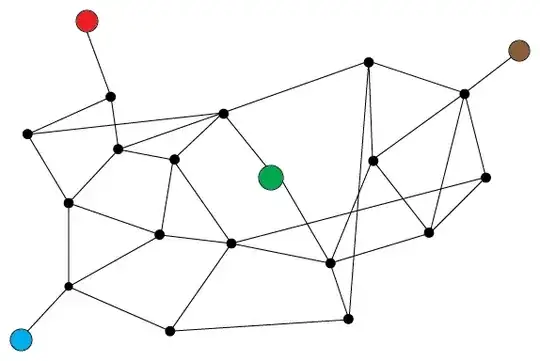This turned out to be a little long-winded, but it was fun. This is probably one of my favorite parts of building new worlds.
TL;DR: A collection of intelligent, formless interdimensional zones that form a constellation around Places and a line-of-sight network across the dimensions and through space.
The first things I thought of when reading your question were the Transitive Planes from Dungeons & Dragons lore and an interdimensional area that links magical doorways in Dragon Age: Inquisition. 2012rcampion mentions the Stargate series in the comments. My answer will pull from elements of all these.
Background
The Transitive Planes are the Astral, Ethereal, and Shadow Planes. They're pretty much the glue that connects the other planes in the D&D cosmos. Like the Astral Plane, your Interchanges connect Places to each other. The other two planes link locations on the Material Plane, which, for your purposes, would be locations in the same Place.
In Dragon Age, Eluvians are elven portals that take a traveler into a nexus. The portals can only be opened if the traveler has a certain token, with each token keyed to a certain portal(s).
Stargate features ring-shaped devices built by the Ancients that create wormholes between them. The Ancients used force fields to keep gates secure, while modern races rely on more mundane methods such as Earth's metal iris and the Goa'uld's use of soldiers.
Interchanges
These Interchanges are nebulous, interdimensional points in an effectively limitless network. Rather than allowing an infinite number of dimensional tunnels to form a hazardous web between the dimensions, gateways lead from a Place to one of these Interchanges. The Interchanges exist in a sort of orbit, not really anchored to the gateways of the Place they orbit as much as the Place itself. This ever-shifting constellation of Interchanges around each Place means gateways can become inactive as it loses line of sight with one Interchange and before it gains line of sight with the next. If there are two Interchanges with line of sight, the gateway remains closed as a safety precaution, to prevent duplication or splicing of travelers.
Whereas gateways can only be used to travel from a Place to an Interchange, Interchanges can be used to travel immense distances or to hop from one dimension to another. Each Interchange has a Master Gateway. A traveler in possession of a Key can access a specific subset of addresses for other Interchanges unique to that Key or Key type. The Master Gateways hold the addresses of every other Master Gateway in the entire network. With a Key, a traveler can use a Master Gateway to create a connection to any other Master Gateway, but only if they have line of sight to each other. This makes dimension hopping more difficult as both the dimensions and the gateways have to be in proper alignment. Master Gateways are intelligent in their own right, allowing them to build a multi-stage tunnel that links any number of them to build a single continuous tunnel, allowing a traveler to move from one Interchange to another so long as some number of intermediary Master Gateways have line of sight to each other; the traveler need never know how many steps were taken to reach her destination.
The gateways in each Place are protected from unwanted access by Tokens. Without the proper Token in her possession, a traveler is refused entry to her destination. The Interchanges collect these wayward travelers if they find themselves rejected in transit, preventing their unwitting destruction. The Interchanges are designed to never reject a traveler, but someone who loses their access rights winds up trapped in the limitless network no matter what they try.
Tokens can be anything: a birthmark, a tattoo, a piece of jewelry, a physiological trait (e.g., red hair). A Place's gateways can be reprogrammed with the proper means, allowing each gateway to have different Tokens over time. This programming also includes such factors as maximum transfer rate, which can be used to ensure that no more than ten people can come through each minute, or maybe hundred, a thousand, or just one per day.
The gateways of each Place are formless. They don't embody any solid form. Instead, they are defined by the space in which they occur. The Master Gateways, being intelligent, can manipulate the dimensions of the gateways that open to their respective Interchanges. This allows arbitrarily large or small creatures, objects, and groups to use gateways at their leisure. Like the local gateways, the Master Gateways can be reprogrammed to limit flow and reject connections. Likewise, Master Gateways can refuse to participate in continuous tunnels that involve banned Interchanges.
The Interchanges themselves are formless. They are controlled by the intelligence of their resident Master Gateway. Their environment is sufficient to support any traveler inhabiting the Interchange. Master Gateways communicate with each other to establish viable conditions at destinations for travelers. Each Interchange can have a limitless number of connections to the local Place, but only those gateways that are active can be interacted with (e.g., seen, touched, used). The intelligence of the Master Gateway can also conceal or reveal active and inactive gateways, depending on specific programming and the Tokens in a traveler's possession; of course, it limits this to the overlapping subset if multiple travelers have differing Tokens.
